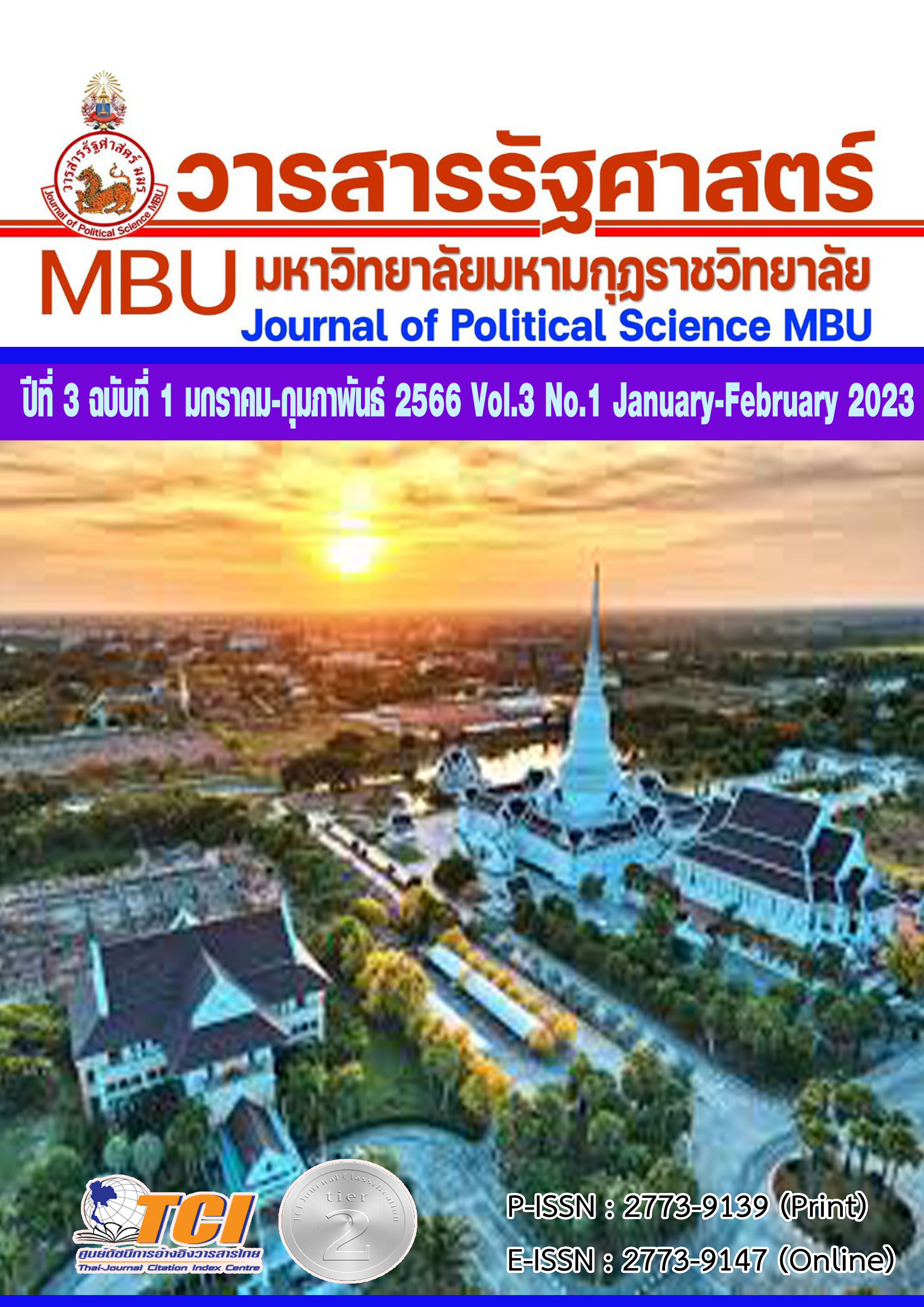GUIDELINE FOR DEVELOPMENT SELF – RELIANCE OF COMMUNITY ENTERPRISE IN EASTERN ECONOMIC CORRIDOR
Main Article Content
Abstract
This research article presenting research results on innovative management of community enterprises in the Eastern Economic Corridor of Thailand. By using the results of innovation management studies to explain the concept of self-reliance. The objectives are as follows: 1) to study innovative management of community enterprises and 2) to study ways to develop self-reliance potential of community enterprises. This article is a mixed method research between quantitative and qualitative research. For quantitative using questionnaires by collecting from 363 members of community enterprises in Chachoengsao, Chonburi and Rayong provinces. The statistics used for data analysis were descriptive. Hypothesis testing was performed using t-statistics and one-way analysis of variance. The level of statistical significance was set at 0.05. Qualitatively, data were collected by in-depth interviews of 9 people and group interviews of 5 people.
The results of the study can be classified into Innovative management in 5 points; marketing process, strategy, behavior or culture and in terms of products and services. The issue in each point with the lowest value was system marketing ( = 2.53), followed by the use of modern technology and innovation ( = 2.66), always developing new strategies to create competitive advantages ( = 2.86), jointly proposing new and creative ways of working for members ( = 3.30) modernization of products and services of community enterprises ( = 3.34), respectively. In term of enhancing the self-reliance potential of community enterprises, they should make short-term and long-term plans, and regular evaluations. Also training to increase knowledge, skills and the selection of appropriate tools or equipment. It must also encourage learning and development.
Article Details

This work is licensed under a Creative Commons Attribution-NonCommercial-NoDerivatives 4.0 International License.
References
กนกอร สีมานนท์. (2565). การประเมินศักยภาพของชุมชน. วารสารสังคมศาสตร์และมานุษยวิทยาพุทธศาสตร์, 7(6), 300-316.
กรมส่งเสริมการเกษตร กระทรวงเกษตรและสหกรณ์. (2562). รายงานสรุปประเภทกิจการวิสาหกิจชุมชน/เครือข่ายวิสาหกิจชุมชน จำแนกตามพื้นที่. เรียกใช้เมื่อ 4 มกราคม 2566 จาก https://smce.doae.go.th/smce1/report/select_report_smce.php? report_id=17
เกษร อักษรรัตน์. (2565). ความรู้และการฝึกปฏิบัติการประเมินศักยภาพวิสาหกิจชุมชนของสมาชิกวิสาหกิจชุมชนในจังหวัดเชียงใหม่. ใน วิทยานิพนธ์วิทยาศาสตร์มหาบัณฑิตสาขาวิชาส่งเสริมการเกษตรและพัฒนาชนบท. มหาวิทยาลัยแม่โจ้.
ณัฐพล บัวเปลี่ยนสี, ปรีดาพร อารักษ์สมบูรณ์, และนิชชิชญา นราฐปนนท์. (2560). การพัฒนาศักยภาพวิสาหกิจชุมชนเพื่อเพิ่มความเข้มแข็งอย่างยั่งยืน กรณีศึกษา วิสาหกิจชุมชนจังหวัดฉะเชิงเทรา. วารสารบัณฑิตวิทยาลัยมหาวิทยาลัยราชภัฏราชนครินทร์, 1(1), 43-50.
สถาบันไทยพัฒน์. (2554). เศรษฐกิจพอเพียงกับการดำเนินธุรกิจ. (พิมพ์ครั้งที่ 2). กรุงเทพมหานคร: บริษัทโทเทิ่ล แอ็คเซ็ส คอมมูนิเคชั่น จำกัด (มหาชน).
สํานักงานคณะกรรมการนโยบายเขตพัฒนาพิเศษภาคตะวันออก. (2566). เป้าหมายการพัฒนา. เรียกใช้เมื่อ 5 พฤศจิกายน 2565 จาก https://www.eeco.or.th
สำนักงานคณะกรรมการพัฒนาการเศรษฐกิจและสังคมแห่งชาติ. (2559). แผนพัฒนาเศรษฐกิจและสังคมแห่งชาติฉบับที่ 12 พ.ศ. 2560-2564. กรุงเทพมหานคร: สำนักงานคณะกรรมการพัฒนาการเศรษฐกิจและสังคมแห่งชาติ.
สำนักงานเลขานุการคณะกรรมการส่งเสริมวิสาหกิจชุมชน. (2565). ระบบสารสนเทศวิสาหกิจชุมชน (อพม.). เรียกใช้เมื่อ 5 มกราคม 2566 จากhttps://smce.doae.go.th/smce1/index.php?result=6.


